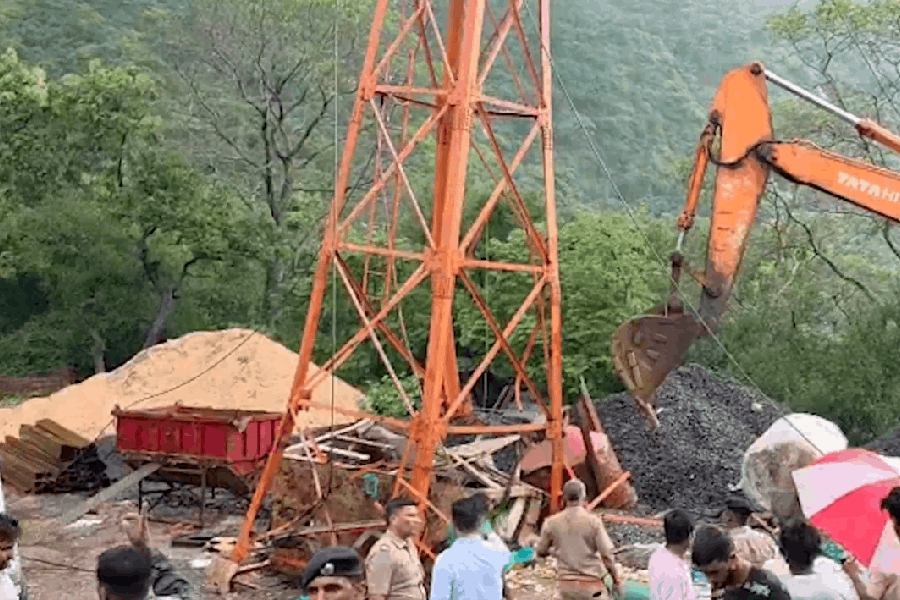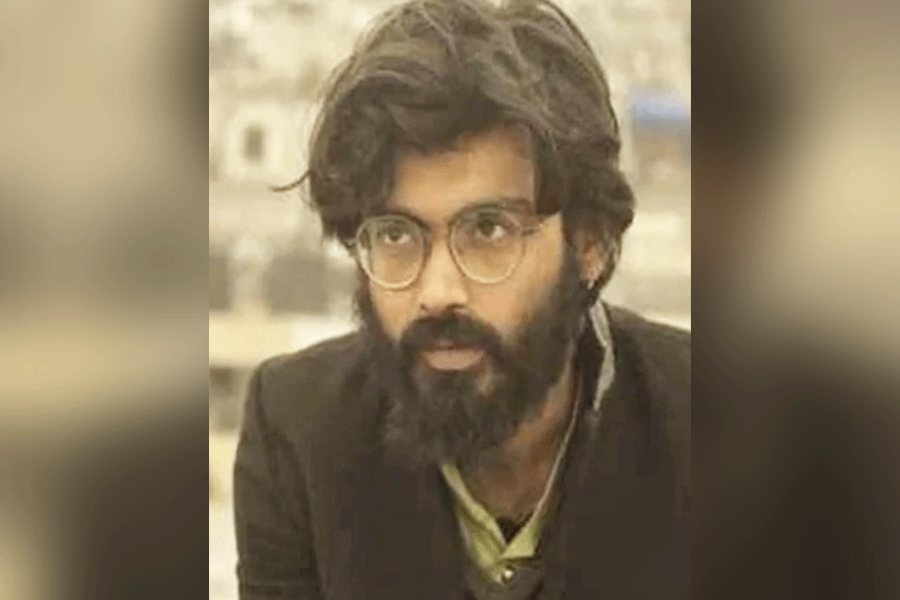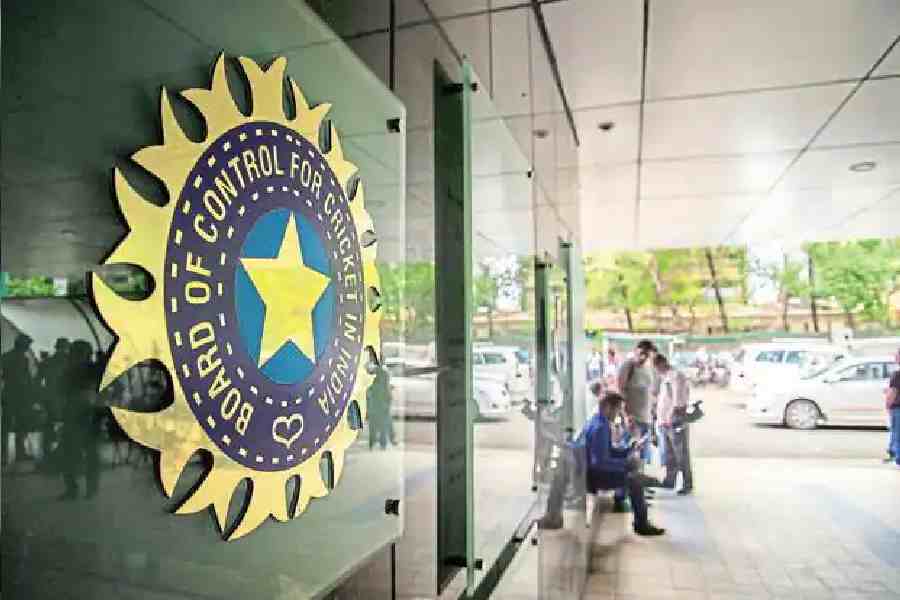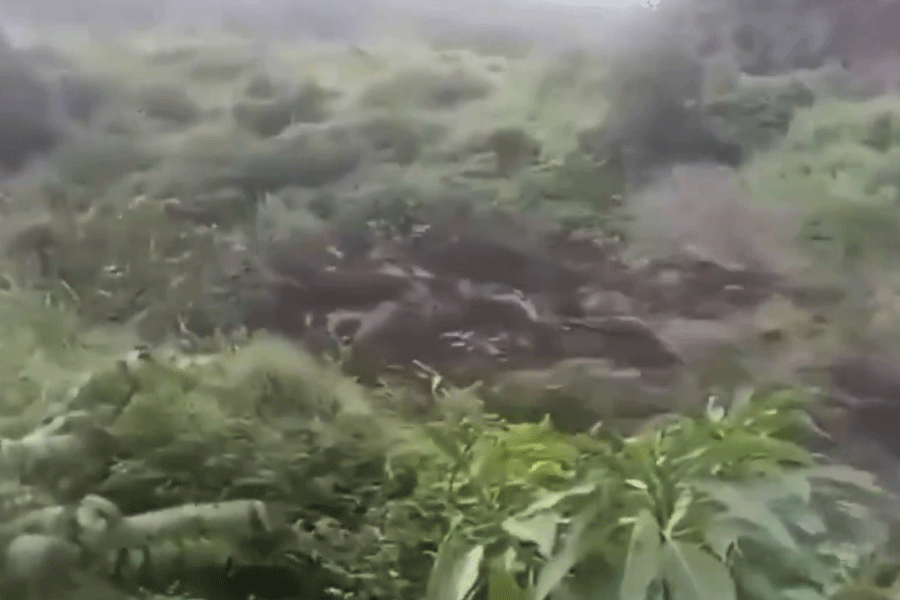 |
| (From left) Satyaki Bhattacharya, Subir Sarkar, Manoj Sharan, Milan Sanyal and Suchandra Dutta at Saha Institute of Nuclear Physics after the CERN announcement on Wednesday. A Telegraph picture |
In the euphoria at CERN was missing an Indian name, a Calcuttan whose work way back in the early 20th century had paved the way for the conceptualisation of the Higgs boson.
The sub-atomic particle believed to be imparting mass and stability to the universe is partly named after Satyendra Nath Bose, whose work in the 1920s, along with that of Albert Einstein and Peter Higgs, led to the CERN discovery announced on Wednesday afternoon. Higgs was present at the Geneva facility during the announcement and lauded repeatedly but no one ever mentioned Bose.
“It’s a pity that the ‘H’ in Higgs boson is in upper case, as is the ‘F’ in Fermion (another sub-atomic particle, named after particle physicist Enrico Fermi). But the ‘b’ in boson, derived from Bose, is always in lower case,” rued Milan Sanyal, the director of the Saha Institute of Nuclear Physics. “I want to point this out to the CERN director in a letter.”
Calcuttans, however, had something to celebrate too. Scientists from the Salt Lake-based institute have made significant contributions to the discovery of the particle resembling the Higgs boson as members of the Compact Muon Solenoid (CMS) team, one of the two squads deployed by CERN to look for the elusive particle.
The core CMS team had five faculty members from Saha Institute — team leader Sunanda Banerjee, Satyaki Bhattacharya, Suchandra Datta, Subir Sarkar and Manoj Sharan. “The five played a key role in the discovery, working in diverse fields such as data analysis, computing, hardware building and particle detection,” said director Sanyal.
In a “reverse brain drain”, all five have joined Saha Institute from various particle physics laboratories in Europe and the US, where their research had earned kudos from top scientists in their fields.
Sunanda Banerjee had been working in the Fermilab in the US as a particle physicist. Banerjee, who is in Australia right now, is responsible for simulation of data in CMS.
Subir Sarkar, another Fermilab associate who joined the team last year, took care of computing of huge data arriving out of the experiment. “The data was so huge that it won’t fit even a several million DVDs. We analysed these using computers in many academic institutes across the world through a technique of networking called grid computing,” said Sarkar.
Suchandra Datta, a former researcher at Pisa, Italy, is an expert on silicon tracker used in CMS. “I am involved with CERN since 1995,” she said. The youngest member of the group, Satyaki Bhattachrya-a doctorate from University of California San Diego-is working with the data acquisition system at CMS.
“The bandwidth required for data transfer is 4 million times than that of your home net connection,” he said. Manoj Sharan, responsible for hardware upgradation, is also a former CERN hand. “It was quite an uphill task with the complicated hardwire,” he said.
The SINP had joined the CMS experiment at the Large Hadron Collider (LHC) at CERN through a memorandum of understanding with the centre in early 2011 when Rolf Heuer, Director-General of CERN, visited Calcutta. “Our institute has significantly expanded its collaborative research activities at CERN since then, particularly in three experimental areas Alice (A Large Ion Collider Experiment), CMS and Isolde (The Isotope Separator On-line Facility),” he said.











